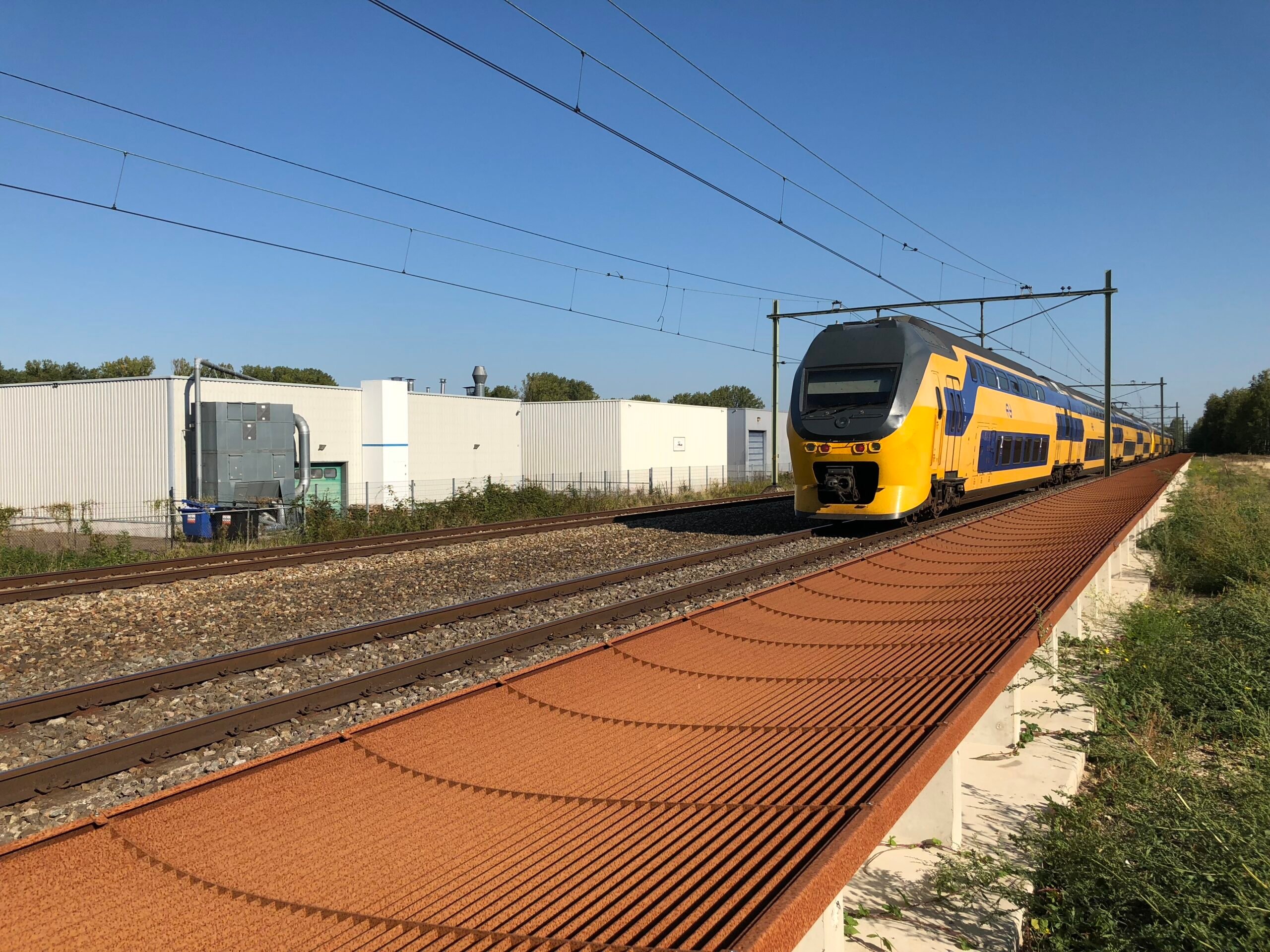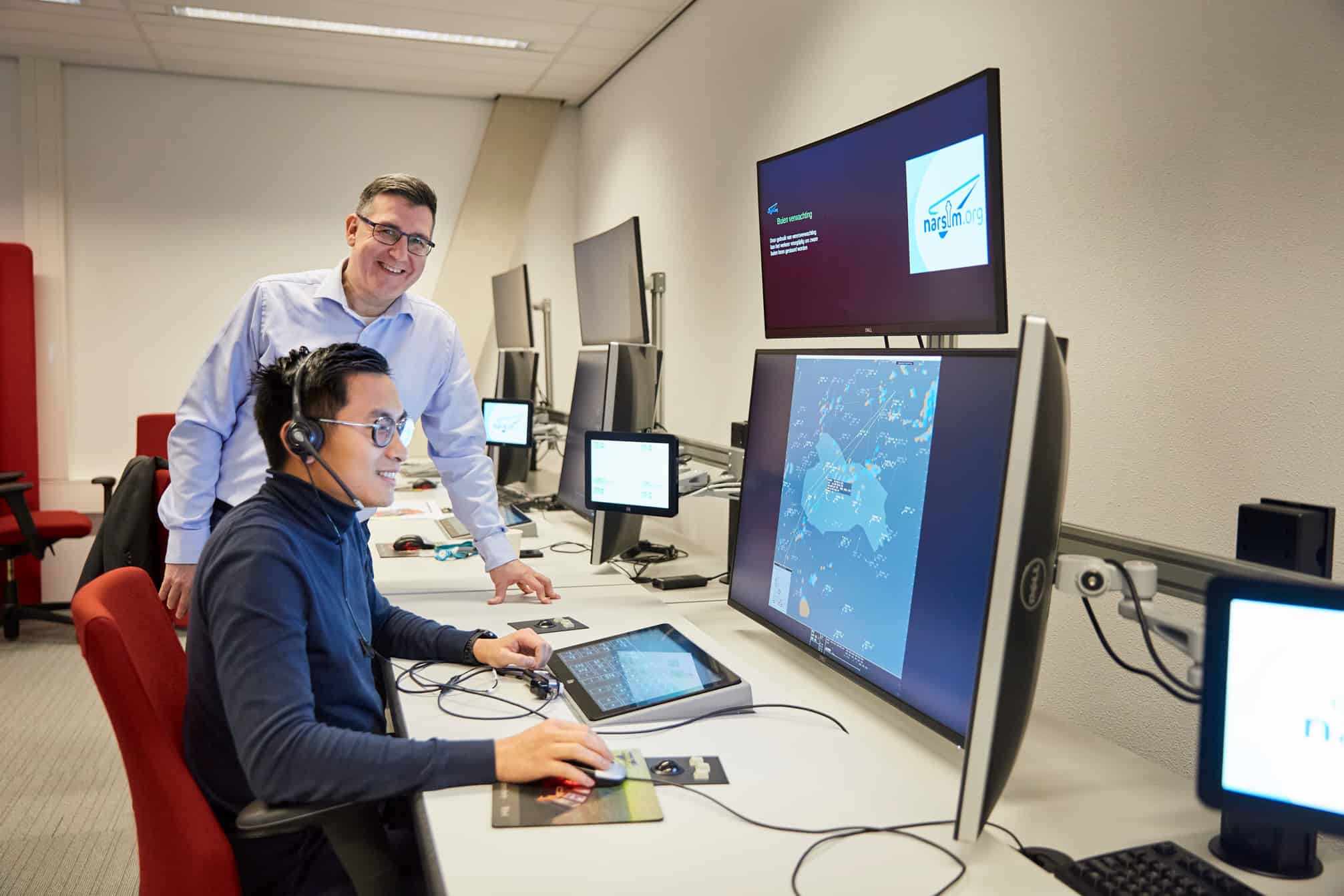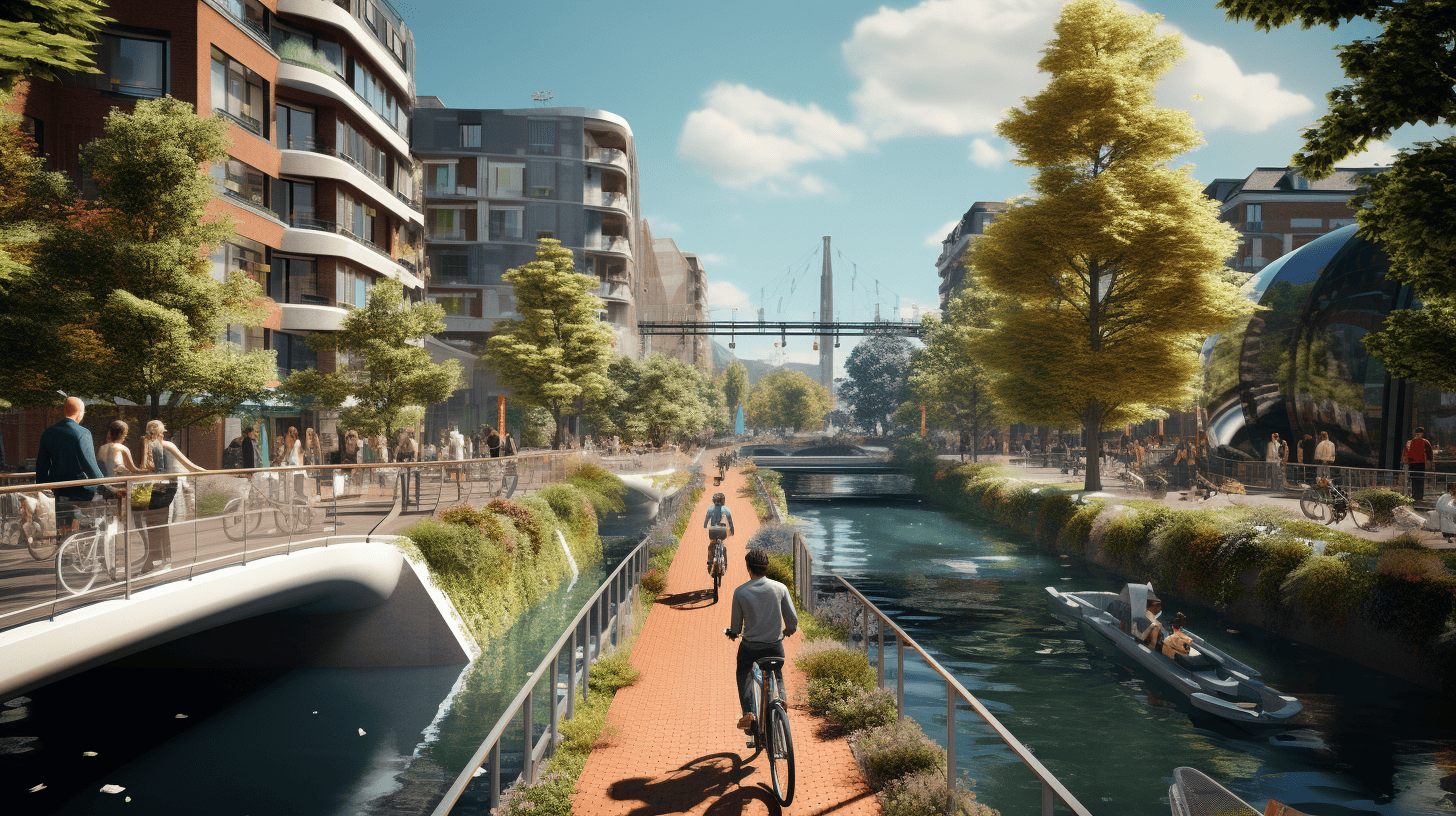
We are all familiar with the noise barriers along freeways and railroad tracks. The ugly, ungainly concrete or glass screens are sorely needed for reducing the noise of vehicles racing past. These days, we also regularly use so-called absorbent road surfaces, which reduce the sound of tires driving over asphalt. Yet these products are not always adequate and we still frequently suffer from the sound of traffic noise along roads or railroad tracks. That is why 4Silence, a spin-off from the Dutch University of Twente, has found a new way to combat noise pollution. Unlike current products that absorb or reflect sound, the products developed by the Twente company deflect noise upwards. This opens up a new option for making the surroundings a little quieter.
Pan flute along the road
Ysbrand Wijnant, CTO of 4Silence and a lecturer in Technical Acoustics at the University of Twente, came up with the technology behind 4Silence more than a decade ago during one of his research studies on traffic noise at the university. “At one point, I thought: ‘Can we also use resonance (how sound moves in thin tubes, the effect of a pan flute, ed.) to do something with the sound of traffic?'” He did some tests and simulations and discovered that he could deflect sound with a so-called diffractor. This is an element with slots of different depths. Sound resonates Inside those slots, causing it to be deflected upwards.
Several other studies and tests followed to find out the exact effect on noise. “The municipality of Enschede made a location available for us to test, and TNO tried out a series of measurements,” Wijnant recalls. This is how 4Silence’s first product and the company itself gradually took shape. With the help of the patent fund from the University of Twente, a patent was applied for and, thanks to an investment from the Twente Technology Fund, the company was able to get off the ground. Entrepreneur Eric de Vries (CEO) and Ysbrand Wijnant then embarked on the adventure of enabling 4Silence to grow from a small spin-off into a company that is now spreading its wings throughout Europe.
Easy and affordable
Meanwhile, 4Silence has three products on the market – all based on a diffractor – and undertakes projects all over Europe. The WHIS®stone is a slotted concrete tile that is laid on the ground alongside the road. It reduces traffic noise by about 2.5 dB. In addition, the company has developed the WHIS®wall. This is a low noise barrier with a steel diffractor on top. It is about one meter high and provides 7 to 9 dB of noise reduction, which is comparable to a normal 3 meter high noise barrier. Lastly, there is also the WHIS®top, a steel or aluminum diffractor that can be placed on top of existing noise barriers for an additional noise reduction of 4 to 5 dB.

This kind of extra diffractor on top of a noise barrier offers an easy and affordable solution for various situations. Wijnant cites an example: “High-speed trains not only make a lot of noise, they also generate a lot of pressure. This means that the noise barriers not only have to be high, but also have to be installed deep down in the ground so that the foundations are strong enough. Raising a noise barrier even higher is not so straightforward. Because our structure does not change the height of the noise barrier, it can be placed relatively easily on top of an existing screen.”
Challenge
According to the CTO, the challenge lies in difficult projects that call for customization. “My goal is not to become very rich with the company. I’m enjoying it so much because we can now do several new and different innovative projects and get to see what new solutions we can come up with. We’ve made a bridge in Groningen quieter. We weren’t allowed to weld or drill on that bridge, which is usually what you need to do to attach sound-absorbing materials. This is why, in this case, we attached sandwich panels fitted with dampening material by using magnets. That also turned out to work really well.”
Focus on the solution
Wijnant spends half his time working on 4Silence and the other half on his work at the university. “I find the tension between university and actual practice particularly interesting. At the university, people want to figure everything out down to the last decimal point, while people out in the field are just looking for a reliable and affordable solution to a problem, which in our case is traffic noise,” he explains. “A lot more can still be gained here if we listen to each other a bit better.” The important entrepreneurial lesson for Wijnant is, therefore, “Make sure you know what exactly the problem is in actual practice. Within the university, people are always looking for solutions, but sometimes that’s not a problem at all in the real world. If there isn’t a problem, then the product tends not to be interesting either.”
Also read: Smart City Business Forum: Don’t develop technologies which won’t solve any real problems
He advises young entrepreneurs to first go job hopping and see how other companies work before you start a spin-off yourself. “Then you learn, for example, the basic things about finances and employees, which are very important,” Wijnant insists. “The most crucial thing in my opinion: focus on your product. Make sure that you have a good product. Then it’s also much easier to bring in investors and grants. I have noticed that a lot of attention is paid to a business plan nowadays. That is also important, obviously, but I wouldn’t put 100 % of your time into that. Within a few months, the business plan will be outdated anyway. A good product will speak for itself.”
International
In the meantime, 4Silence is growing fast. “We now have ten employees from a variety of backgrounds,” Wijnant says. “That’s important because then you complement each other really well.” The spin-off is involved in projects in Denmark, Belgium, England and Germany, among others. “We are running pilots for Deutsche Bahn along the rail tracks and for Autobahn GmbH along the roadside to bring down the noise levels more around gas stations,” he says with justifiable pride. “The operator of the High Speed Rail in England is looking into what the diffractor can do for them in terms of noise reduction and cost savings. If that turns out to be beneficial, they may even be allowed to lay a number of kilometers over there. That would be really great.”
Apart from that, the company is also in talks with ProRail. In order to carry out projects for the Dutch government in the Netherlands, 4Silence first needs to achieve a milestone. “Our products must be included in the calculation and measurement guidelines. TNO and the RIVM are now figuring out a simplified calculation method that allows people to quickly calculate, before construction, how much noise reduction will be achieved at various distances behind the diffractor. Governments need such a method before they can roll out our products on a mass scale,” Wijnant clarifies. Selling the product to governments, he says, is especially important because the market for private individuals and companies is too small. “As we are working on a very new product, the studies all took a bit long, but we are almost there. We hope to be included in the calculation and measurement guidelines for noise early next year once the method developed by TNO and RIVM is ready.”
Indispensable support
The world is now wide open for 4Silence, although Wijnant is aware that it would not have succeeded without its backers from the very first hour. “An employee of the province of Gelderland really stuck his neck out for us in the early days. The same goes for the municipality of Enschede and others as well. The public authorities weren’t sure yet whether our product would work. There was a chance of success but also a chance of failure and yet they still wanted to try it out,” he states. “I hope governments and universities continue to encourage entrepreneurship. That is so vital for innovation in the Netherlands. After all, without them we would never have succeeded.”
Also read: The 4TU TechTalk with Eric de Vries, CEO of 4Silence
4TU: the spin-off from the spin-off
The series the “The spin-off from the spin-off” is an initiative of 4TU.Federation and Innovation Origins. This is where you can read the stories behind the spin-offs of the four Dutch technical universities and the Netherlands Organisation for Applied Scientific Research (TNO). In spin-offs, science and entrepreneurship come together to bring a new technology to the market. They are a driving force behind innovation in the Netherlands.








